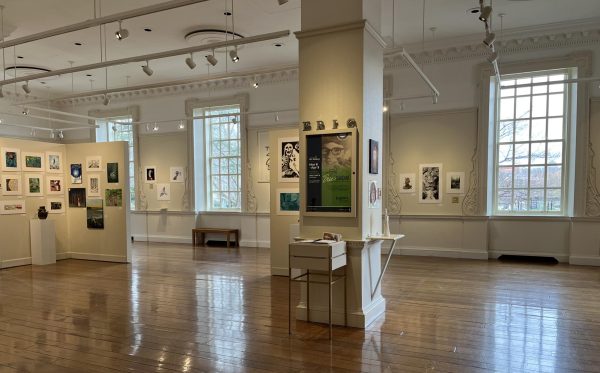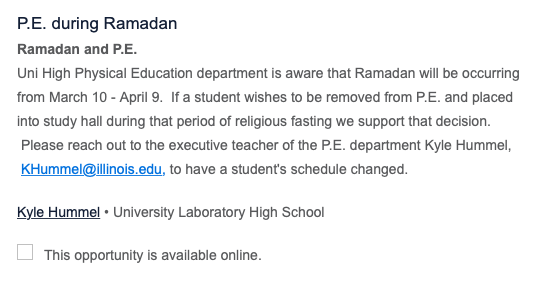Uni High Students work at NCSA through SPIN internships
Fourteen Uni High students with internships at NCSA (National Center for Supercomputing Applications) presented their work on various computing-related projects on Monday, Dec. 10.
Internship opportunities were offered to Uni students through a program called SPIN (Students Pushing Innovation). The program emerged through a collaboration between Uni High and NCSA. In their internships, students worked with mentors, graduate students and NCSA faculty on various projects that used computers or computer software. Students also had access to the NCSA’s impressive technology.
Edward Kong, a sophomore, was impressed by NCSA’s computers, which he said were “much more powerful than anything I’d ever seen before”.
SPIN came about only after a generous $100,000 donation from David Frankel, a Uni High alumnus from the class of 1976. Marianne Downey, Director of Advancement at Uni, provided some background information on the donation.
“David Frankel, when he was a student here at Uni High, was very involved with the Plato Project, a computer programming project that involved undergraduate students and faculty on campus… he really values that as something special that Uni High offers, an opportunity to interface with all of these amazing resources on the campus, and so he wanted to ensure that it continues to happen and grow, and he knows it takes resources to do that, ” she said.
While Frankel’s generous gift provided the funding for SPIN, lots of work was needed to make the program a reality.
“Faculty members took the whole summer to plan out who to see, how to engage the students, how to find out what the interests were, and how to develop the curriculum if we did do it,” said Downey. After all the organizational work, students applied for internships during September. Fourteen were accepted, and worked on their projects for the next nine weeks. Students typically worked on their projects three times a week On Dec. 10, the interns presented their work in short “lightning talks” at the NCSA building.
A few NCSA interns shared their experiences on the project.
Edward Kong worked on deep learning, which is “training computers to identify things and images”. Kong’s project wasn’t exactly what he predicted it to be. “It’s not as easy as it first seems. A lot of the things I had to do were things I thought were already automated,” Kong said. Kong said the internship interested him in computer engineering.
Noah Rebei, another intern, worked with virtual reality.
“I’m working with a team of undergraduates, as well as Emi Brown, a junior. We’re basically doing a virtual reality application, which is visualizing molecules in 3D space. It’s molecular structure, electron density, and various other things.” Rebei said.
While he knew how to program, the internship required him to learn other skills.
“I know how to program, but I was introduced to things like Avogadro and Vesta, which are mostly chemistry oriented. Getting used to those and understanding them takes a while, but once you know how to use them it’s pretty nice,” he said.
While technology was a large component, Rebei said his favorite part of the internship was working with a team of undergraduates.
“There’s also a team of undergraduates who know a lot about the topic they’re working on, and you can ask them anything and they’ll know the answer. They’re always ready to help. Getting to know them and working on their team was pretty nice,” he said.
Robert Nagel worked a professor to reproduce proofs of the four-color-theorem, which says every map can be colored using four colors. He used computers to reproduce the proofs.
“Since the proofs were made using the assistance of a computer and a computer program, but they were made a long time ago, the project was basically to get those programs running successfully on modern machines, and check that they still work correctly,” he said.
Nagel’s project was not easy, and he received surprising results after getting the code to run.
“Eventually we did get the code to run on multiple different machines, and we ran it on five I believe. Three of them crashed, and two ran successfully. But the two that ran successfully produced different output, which is not that great when you’re trying to reproduce something. That’s something we’re trying to work on,” Nagel said.
I'm Will, a current senior in the class of 2019. This is my first semester taking Journalism, and I hope to write about subjects that are relevant to me...

